There has always been war somewhere in the world. It seems to be difficult to live peacefully together. In the course of the 19th and early 20th century the ideal of peace in the world was heard more and more often. Political and religious tensions around the turn of the century made the peace movement even more popular and all over Europe and America organizations were founded, inspired by people like Leo Tolstoy and Alfred Nobel.
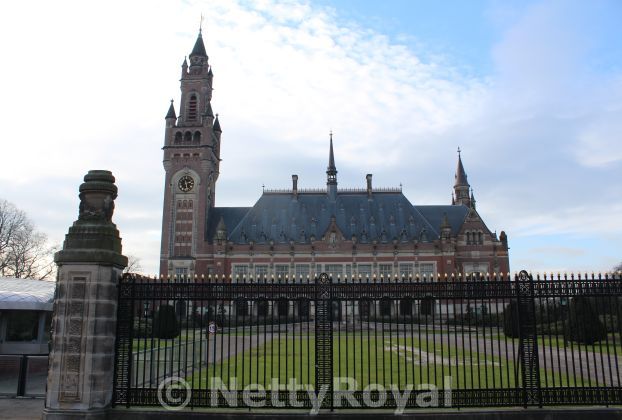
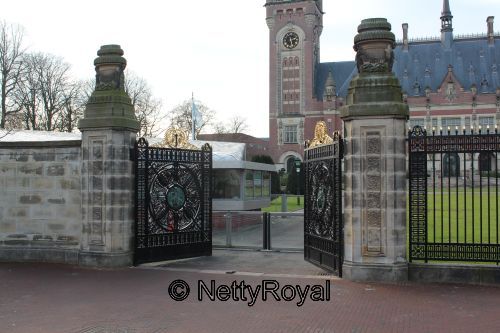

It was Tsar Nicholas II of Russia who took the initiative to organize an international peace conference. The first conference took place in The Hague, The Netherlands, in 1899, when 26 countries came together to speak about disarmament and international jurisdiction. A Permanent Court of Arbitration was establised, and in 1907 a second peace conference was organized, again in The Hague. This time 44 countries participated. By the time of the second conference the first stone of the ambitious Peace Palace in The Hague could be laid. The key of the building was presented to the Permanent Court of Arbitration on 28 August 1913 – just before the First World War. Present were among others Queen Wilhelmina and Queen Mother Emma of the Netherlands.
The building was designed by the French architect Louis Cordonnier and was financed by the American steel magnate Andrew Carnegie. The original design was too expensive, so in collaboration with the Dutch architect Johan van der Steur the design was adapted and got only two instead of four towers. It took six years to build th epalace in the neo-renaissance style on the grounds of the former estate Zorgvliet, once residence of Queen Anna Pavlovna of the Netherlands. The countries that supported the Permanent Court of Arbitration donated building materials, artworks like carpets, vases, statues. The highest tower was adorned with a Swiss clock. The carillon in the tower at the moment has 47 bells, the last one added in 2013 when the building celebrated its 100th anniversary. The carillon is played every Tuesday and Thursday from 13.oo to 13.45.
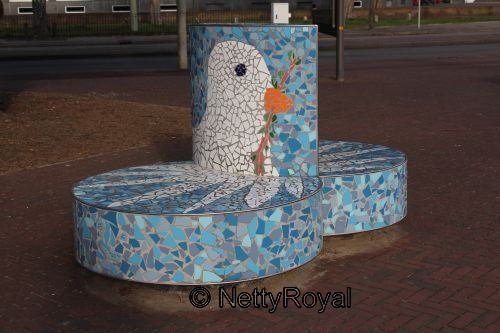
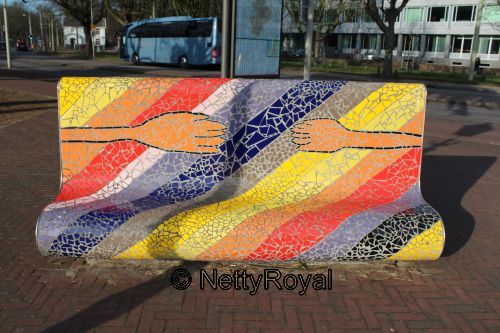
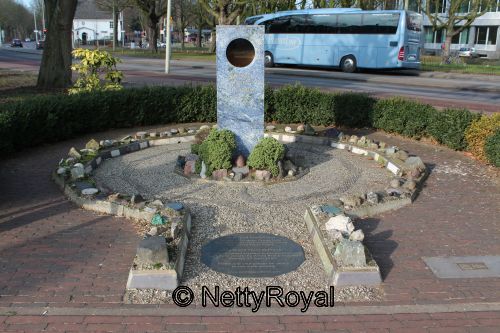
The Peace Palace is surrounded by a garden, a wish of sponsor Andrew Carnegie. It was designed by the British garden architect Thomas Mawson. He choose a gradual transition between garden and palace, with spacious terraces. In the garden are trees and shrubs with small leaves and no sharp thorns, there is a big pond as water is one of the first conditions of life. The trees around the garden shield it from the busy city. The peace time is also very visible just outside the garden – see pictures above. The last picture shows the World Peace Flame – 197 countries and regions join together in piece – to remember that in April 2004 for the first time in history every country of the world endorsed a joint Statement for Peace. The ambassadors representing their nations donated a special stone from their country for the pathway around the flame, symbolising their commitment to peace.
At the gate is a small but nice visitor’s centre that is open from Tuesday to Sunday 10/11-16.00. Sometimes during the weekend and for a couple of weeks in summer the doors of the palace are open to the public. Tickets can only bought online. A few times a year there are also garden tours, led by a gardner.
